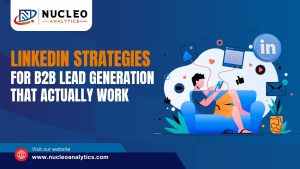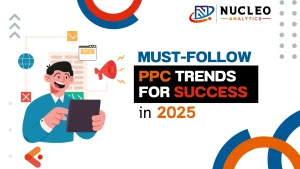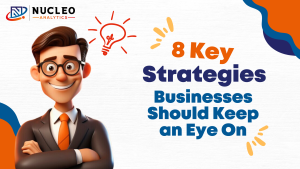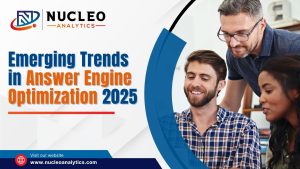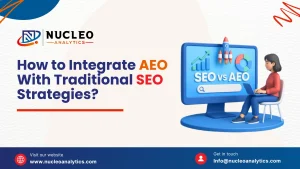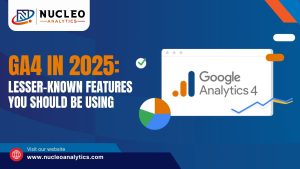Micro-Influencers vs. AI Influencers: What Works Better in 2025?
In a digital landscape that never pauses, brands constantly search for the best influencer marketing strategy. Should you invest in real-life personalities or explore the futuristic appeal of AI influencers? In 2025, both micro-influencers and AI-generated icons offer unique advantages, but one stands out clearly in reaching your audience genuinely and effectively.
At Nucleo Analytics, a leader among social media marketing firms and social media advertising agencies, we’ve analyzed countless campaigns to uncover which approach delivers stronger engagement, impact, and ROI. Let’s dive in together and explore what works best for your brand in 2025.
What Are Micro-Influencers and AI Influencers?
Micro-Influencers Defined
Micro-influencers are real people with followers typically between 10K–100K. They:
- Specialize in niche interests
- Have a tight-knit audience
- Engage actively through comments and stories
- Command attention through authenticity
AI Influencers Explained
AI influencers are digital avatars created using artificial intelligence. They:
- Operate 100% online
- Have fully controlled personas
- Generate consistent, brand-aligned content
- Scale effortlessly across platforms
Each offers a unique route to audience connection, and both warrant careful consideration.
Micro-Influencer Strengths and Limitations
Strengths
- Authenticity & trust: Followers see them as relatable people.
- Engagement: High comment and message response rates.
- Niche expertise: Deep domain knowledge builds authority.
- Creative flexibility: They can customise content and voice to fit your brand tone.
Limitations
- Limited reach: Fewer eyes compared to macro or celebrity influencers.
- Scalability challenges: Managing multiple partnerships demands more time.
- Inconsistency: Content quality can vary across individuals.
- Potential conflict: Prior endorsements may clash with your brand identity.
AI Influencer Strengths and Limitations
Strengths
- Full control: Brands dictate persona, visuals, and messaging.
- Consistent presence: AI never takes a day off—content drops happen on schedule.
- Rapid content production: An AI can produce multiple posts in minutes.
Innovative appeal: Tech-savvy audiences often notice and appreciate the novelty.
Limitations
- Trust gap: No real face or story makes it hard for audiences to connect emotionally.
- Creative constraints: AI may follow templates and struggle with nuanced authenticity.
- Technical costs: High-quality AI design, training, and maintenance require investment.
Ethical concerns: Manipulating a virtual persona raises transparency questions.
Comparing Micro vs. AI Influencers in 2025
Here’s a breakdown to help you weigh your options:
| Aspect | Micro-Influencers | AI Influencers |
| Authenticity | Human origin, personal backstory | Created and controlled by brands |
| Trust & Engagement | High comment/messages per follower | Low empathy, reactive potential |
| Reach | Moderate, niche-based | Potentially unlimited, scalable |
| Scalability | Resource-heavy to expand | Easy to scale across platforms |
| Consistency | Varies by individual routine | Uniform output and visual quality |
| Cost | Variable: payment + product passes | Upfront tech investment, lower run rate |
| Creative freedom | Can adapt easily and pivot in real time | Limited to programmed assets |
| Compliance | Varies, requires ongoing brand review | Controlled, but more easily tracked for transparency |
| Novelty & Buzz | Genuine buzz within the niche | High initial buzz; novelty fades |
| Risk of backlash | Influencer behaviour is unpredictable | Auditable and manageable messaging logic |
Which Option Delivers Better ROI in 2025?
Micro-Influencers: ROI Drivers
- Buyer trust is significantly higher because followers perceive genuine recommendations.
- With tight follower bases, conversion rates often exceed larger channels.
- Human discretion ensures intelligent alignment with brand values.
- Multi-tiered campaigns involving multiple micros are time-intensive but controllable.
AI Influencers: ROI Drivers
- AI can execute many campaigns in parallel without fatigue or creative burnout.
- Strict brand guidelines deliver consistent presentation and message clarity.
- Once developed, virtual creators offer better cost-per-post economics than paid micro-influencer partnerships.
- AI is ideal for rapid product rollouts, repeated messaging, or 24/7 engagement bots.
When to Use Micro vs. AI Influencers?
Go Micro-Influencer When:
- Your brand needs trusted voices in key niche communities (e.g., fitness, eco-living, tech).
- Audience connection matters more than scale.
- You live in verticals underserved by AI personas (hand-made crafts, mental health, specialist hobbies).
Go AI Influencers When:
- You want scalable, high-volume content across platforms.
- Brand identity is tightly controlled and not reliant on emotional storytelling.
- You want to enter cross-cultural markets quickly through diverse AI avatars.
Can You Mix the Two for Maximum Impact?
Absolutely. A hybrid approach can deliver best-in-class results:
- Launch with AI to generate buzz and define brand voice.
- Engage micro-influencers to add human depth, niche trust, and authentic endorsement.
- Use performance tracking to identify influencers or AI content styles that resonate.
- Refine and scale based on data—expand your AI roster or bring in more micros as needed.
Hybrid strategies combine scalability with relatability, delivering a balanced marketing approach.
Steps to Launch a Hybrid Influencer Campaign
Step 1: Define Clear Objectives
Set measurable goals:
• Brand reach and awareness?
• Content volume?
• List building or lead generation?
• Product-specific sales uplift?
Every platform and persona must serve a well-defined purpose.
Step 2: Develop AI Persona(s)
Work with your creative and data teams to define:
• Visual aesthetics
• Personality and communication style
• Core message framework
• On- and On-/offboarding processes for persona maintenance
Step 3: Select Niche Micro-Influencers
Choose micro creators who:
• Reflect your brand values authentically
• Demonstrate high engagement rates and community trust
• Produce content aligning with your voice and aesthetic
Step 4: Set Up a Unified Campaign Structure
A synchronized approach should:
• Align messaging and CTAs
• Utilise similar hashtags and campaign tags
• Coordinate publishing calendars for synchronous topic launches
• Track reporting data from both influencer types
Why Top Social Media Marketing Firms Use Both?
Industry-leading social media marketing firms utilize hybrid methods for one simple reason: diversified engagement works better.
AI covers your brand’s tone, gives constant visibility, and scales flawlessly. Micro-influencers add authenticity, credibility, and emotional connection in specific segments. This dual approach delivers both quantity and quality, without compromise.
Potential Challenges with Each Approach
Micro-Influencers Challenges
- Budget unpredictability depending on influencer rates
- Brand misalignment or behaviour issues require contingency planning
- Managing multiple contracts and deliverables
AI Influencers Challenges
- Requires brand commitment and investment
- Novelty may fade, the persona needs to be refreshed
- Misses raw human imperfection and the emotional hook
A thoughtful strategy uses strengths from both while working around their weaknesses.
Choosing Nucleo Analytics as Your Influencer Partner
At Nucleo Analytics, the best social media advertising agency, we specialize in deploying best-in-class influencer strategies. We offer:
- AI persona design aligned to brand voice
- Micro-influencer network sourcing across niche verticals
- Integrated campaign management across platforms
- Real-time tracking dashboards for ROI and insight
We’re not just another influencer agency; we’re your strategic partner in 2025’s connected world.
Bring Your Influencer Strategy to Life
Ready to Lead the Market in 2025?
Let’s design a hybrid influencer programme that leverages the best of both worlds, scalability and sincerity. Whether you’re launching a new product or wanting year-round visibility, social media advertising agencies like Nucleo Analytics have you covered.
Book your free strategy session today at nucleoanalytics.com
Let’s build purpose, connect genuinely, and convert consistently.
If you’re ready to stand out in the noise, we’re ready to help—two influencer types at a time.











